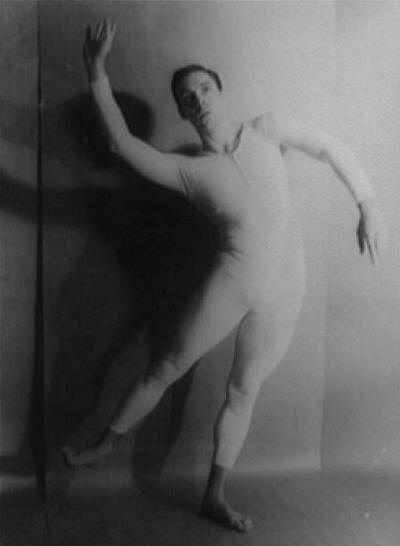Queer Places:
27 Vandam St, New York, NY 10013
 Paul Taylor (July 29, 1930 - August 29, 2018) was one of the most influential dancers and choreographers of the twentieth century.
Taylor has been an important presence in American dance since the 1950s.
When he wrote his autobiography, at the age of 57, Taylor revealed his ambivalence
about sex and gender in dance and life, remarking that to "pick partners of consistent gender would've run
against an arbitrary streak" that he considers one of his strengths.
Paul Taylor (July 29, 1930 - August 29, 2018) was one of the most influential dancers and choreographers of the twentieth century.
Taylor has been an important presence in American dance since the 1950s.
When he wrote his autobiography, at the age of 57, Taylor revealed his ambivalence
about sex and gender in dance and life, remarking that to "pick partners of consistent gender would've run
against an arbitrary streak" that he considers one of his strengths.
He was born Paul Belleville Taylor, Jr. on July 29, 1930 in Allegheny County, Pennsylvania. After his parents
divorced he was shuttled between various friends and relatives as his mother worked full-time in a
restaurant.
Taylor attended Syracuse University on an athletic scholarship as a swimmer and majored in sculpture and
painting. He left school during his junior year to study with Martha Graham,
Antony Tudor, and
José Limón,
among others.
He then danced with the Merce Cunningham Dance Company (1953-1954), Pearl Lang (1955), and then the
Martha Graham Dance Company (1955-1962).
Taylor established his own company in 1964. After appearing at the Festival of Two Worlds in Spoleto, the
company began to tour all over the world. Several of his company's tours have been sponsored by the
United States State Department.
At 6'3" Taylor is a large man for a dancer, but he danced with a startlingly fluid movement. His lyrical
approach gave barefoot modern dance a neo-classic style with a virtuosic edge.
When Taylor retired from dancing in 1974 at the age of 44, many felt that this very good choreographer was
on his way to becoming a great one.
Many of his dances have been performed by major ballet and modern companies around the world,
especially Aureole (1962), Esplanade (1975), Airs (1978), and Arden Court (1981). No other modern dance
choreographer is so popular with ballet companies and their audiences: over fifty ballet troupes have
performed his pieces.
Taylor's fertile imagination has created over 100 dances. Perhaps most impressive is the expressive range of
his work, which extends from the despairing Last Look (1985) to the critical social commentary of Cloven
Kingdom (1976) and Big Bertha (1971) to the exuberant comedy of Ab Ovo Usque Ad Mala (1986).
While Taylor has collaborated with such established visual artists as
Robert Rauschenberg, Gene Moore,
John Rawlings, and Alex Katz, another designer of his dances, "George Tacet," is Taylor himself. Since the
1960s, Jennifer Tipton has lit almost all of Taylor's dances.
From its beginning the Paul Taylor Dance Company was distinguished by the look of its male dancers.
Typically, they are larger than men in other companies. Their size gives Taylor's choreography a muscular
weight.
With rare exceptions, Taylor has treated his company as a true ensemble, equally distributing solo roles
among them.
Several former members of the Paul Taylor Dance Company have gone on to establish their own companies,
which is another indication of Taylor's influence on the shape of twentieth-century modern dance. Among
them are Laura Dean, Pina Bausch, Daniel Ezralow, David Parsons, Twyla Tharp, and Dan Wagoner.
Dancer and budding choreographer Christopher Gillis had been designated Taylor's heir
apparent. However, he died of AIDS complications and the company's future leadership is now uncertain.
In 1987 the company's concerts began to include work by choreographers other than Taylor; and in 1992
Taylor established a junior company, Taylor 2.

by Carl Van Vechten
In his chatty autobiography Private Domain (1987), Taylor mentions sexual encounters with both men and
women, yet concludes that "As far as romance goes, I can forget it." He seems to find his responsibility for
his "family" of dancers a satisfying substitute.
Same-sex partnering appears in works such as Esplanade (1975), Kith and Kin (1987), Company B (1991),
and Piazzolla Caldera (1997). Still, these works may not indicate much about Taylor's private life. As he has
warned many interviewers during his career, "I'm not trying to do autobiographical dances, that's not my
thing."
Among Taylor's honors are a Guggenheim Fellowship (1961), an Emmy Award (Speaking in Tongues, 1991), a
Kennedy Center Award (1992), and a National Medal of Arts (1993).
My published books:


BACK TO HOME PAGE
- Taylor, Paul (b. 1930)
by Bud Coleman
Encyclopedia Copyright © 2015, glbtq, Inc.
Entry Copyright © 2002, glbtq, Inc.
Reprinted from http://www.glbtq.com
 Paul Taylor (July 29, 1930 - August 29, 2018) was one of the most influential dancers and choreographers of the twentieth century.
Taylor has been an important presence in American dance since the 1950s.
When he wrote his autobiography, at the age of 57, Taylor revealed his ambivalence
about sex and gender in dance and life, remarking that to "pick partners of consistent gender would've run
against an arbitrary streak" that he considers one of his strengths.
Paul Taylor (July 29, 1930 - August 29, 2018) was one of the most influential dancers and choreographers of the twentieth century.
Taylor has been an important presence in American dance since the 1950s.
When he wrote his autobiography, at the age of 57, Taylor revealed his ambivalence
about sex and gender in dance and life, remarking that to "pick partners of consistent gender would've run
against an arbitrary streak" that he considers one of his strengths.
